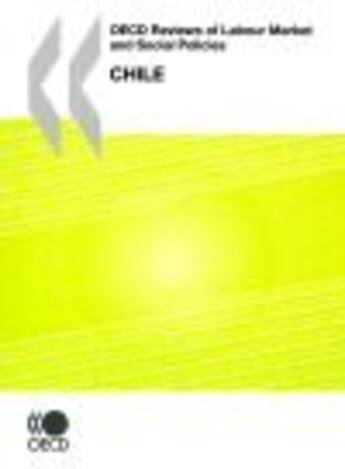-
Date de parution : 14/04/2009
-
Editeur :
Ocde
-
EAN : 9789264060609
-
Série :
(-)
-
Support :
Papier
-
Nombre de pages : (-)
-
Collection :
(-)
-
Genre :
Economie
-
Thème :
Economie
-
Prix littéraire(s) :
(-)
Résumé:
This report analyses in detail the implications of recent developments in Chile's labour market and social policy and considers the available policy options from the perspective of OECD countries' experience.
The report finds that Chile has enjoyed rising living standards over two decades of... Voir plus
This report analyses in detail the implications of recent developments in Chile's labour market and social policy and considers the available policy options from the perspective of OECD countries' experience.
The report finds that Chile has enjoyed rising living standards over two decades of strong economic growth. The incidence of poverty is now much lower and there is better access to adequate housing, education and healthcare. Nevertheless, Chile's income distribution remains disturbingly unequal by OECD standards. This is partly due to Chile's a relatively low employment rate, especially for women, but it also reflects a segmented labour market, where much of the recent job creation has occurred in relatively low-productive sectors. Moreover, despite the existence of an internationally renowned pension programme, Chile's social protection system as a whole has still a relatively long way to go before reaching the standards of developed countries in terms of effective coverage and capacity to assist needy households. Chilean policy makers have begun to develop and implement a series of ambitious reforms, intended to promote the twin goals of work and equity.
Tables des matières:
Chapter 1. Key Trends: Strong Economic Growth but Insufficient Job Creation
-1. A favourable macroeconomic environment
-2. Chile has large human resources that are not well utilised
-3. Job creation n low-productivity sectors
-4. The quality of jobs, subcontracting and worker dispatching, and informal employment
-5. Significant improvements in health, education, and housing
-6. Poverty has been much reduced, but the income distribution remains very unequal
-7. Income inequality in Chile is closely linked with wage inequality
-8. Regional diversity
-9. Conclusions
Chapter 2. Towards More Equal Job Opportunities
-1. Introduction
-2. Important issues of labour legislation have yet to be resolved including employment protection legislation, subcontracting and temporary work agencies, and working time
-3. Industrial relations and collective bargaining
-4. Labour taxation and informal employment
-5. The Labour Inspectorate and labour courts
-6. An atypical unemployment insurance programme
-7. The public employment service
-8. Job related training and lifelong learning
-9. Special issues concerning the employment of women
-10. Conclusions
Chapter 3. Reducing Poverty in the Working-Age Population
-1. Introduction
-2. Social policy: overall spending and redistributive effect; education, heatlh and housing policies; an integrated approach to supporting the poor
-3. Conclusions
Chapter 4. The Normalisation of Chile's Pension System
-1. Introduction
-2. The Chilean Pension System
--Poverty among elderly and redistribution of pension spending
--The basic solidarity fund
--The mandatory private pension system
--Disability and Survivor coverage
-4. Conclusions
Annex 4.A1. Background data to Chile's Private Pension System
Annex 4.A2. The Chilean Pension Market: Competition, Individual Choice and Financial Risk Management
Bibliography
Donner votre avis














